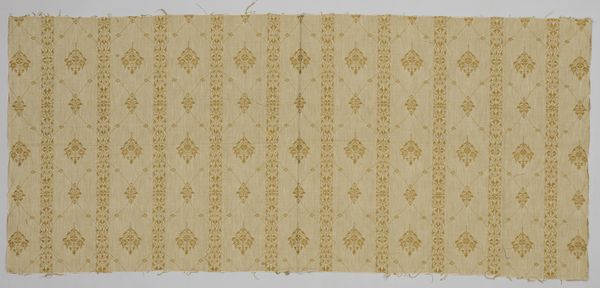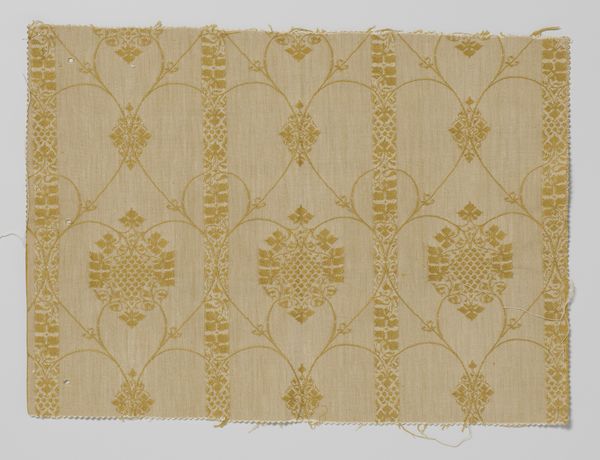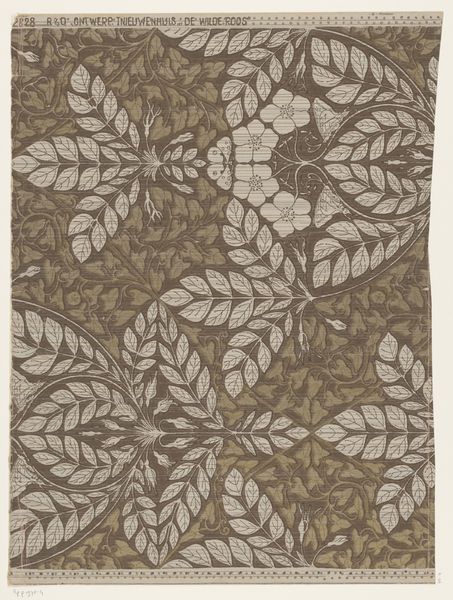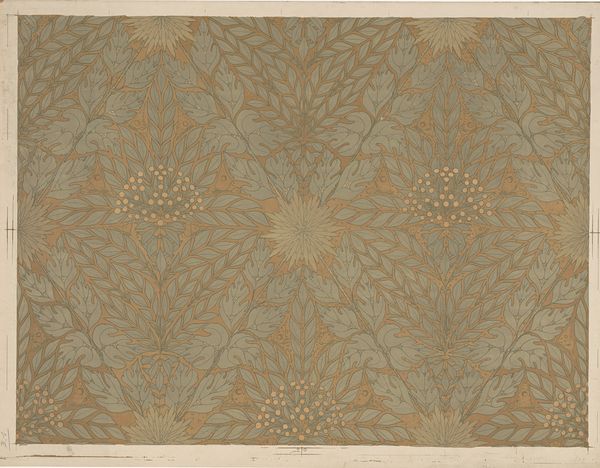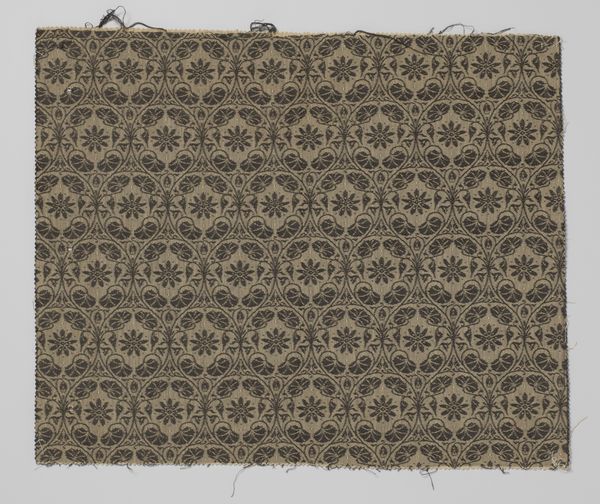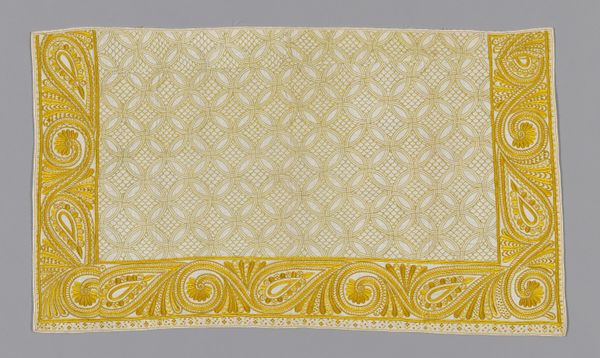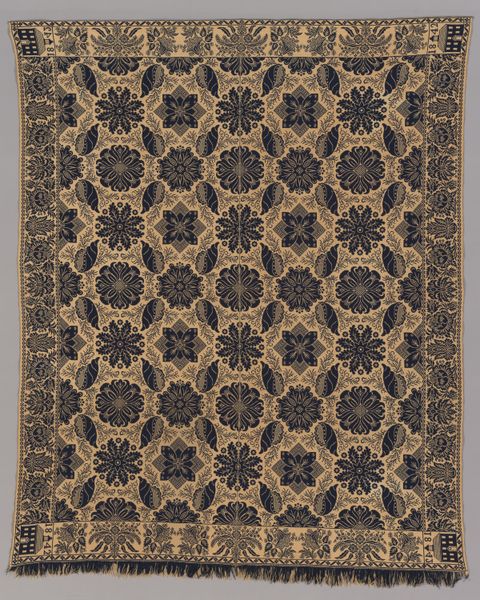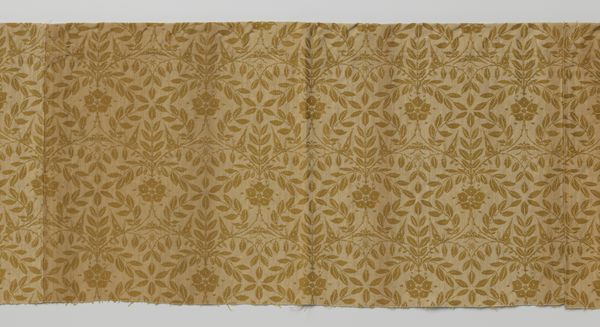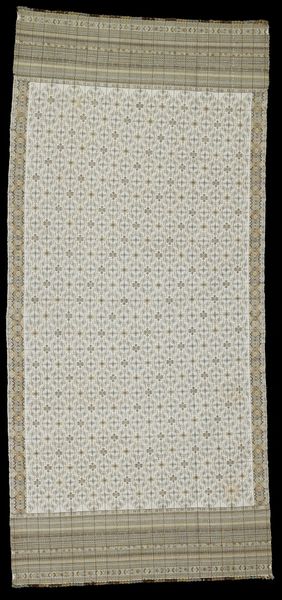
Bespanningsstof met patroon van bladeren en vlinders spitsovale banden van blaadjes 1909 - 1924
0:00
0:00
theonieuwenhuis
Rijksmuseum
textile
#
natural stone pattern
#
arts-&-crafts-movement
#
textile
#
collage layering style
#
fashion and textile design
#
fabric design
#
repetition of pattern
#
vertical pattern
#
pattern repetition
#
textile design
#
decorative-art
#
imprinted textile
#
layered pattern
Dimensions: length 28.5 cm, width 39.5 cm
Copyright: Rijks Museum: Open Domain
Editor: So, here we have "Bespanningsstof met patroon van bladeren en vlinders spitsovale banden van blaadjes," a textile piece made sometime between 1909 and 1924 by Theo Nieuwenhuis. The repeating pattern gives it a calming, almost wallpaper-like feel. What catches your eye about this textile? Curator: For me, it's about understanding this textile as a product of its time, a physical manifestation of social and economic forces. Look at the repeating pattern, the somewhat muted tones. This isn’t just decoration; it’s evidence of the Arts and Crafts movement's ambition to reform industrial production through design. Editor: How so? Curator: Well, think about the labor involved. This fabric, with its meticulously repeated motifs, would have been made either through intensive handcraft or early industrial processes mimicking handcraft. The material itself—likely a relatively inexpensive cotton or linen—speaks to a desire to make aesthetically pleasing design accessible, although to whom precisely is still debatable. It walks a fine line, doesn't it, between the handcrafted ideal and the reality of mechanized production and middle class consumption? Editor: So, the very fabric tells a story about production methods and social aspirations? It is not about its face value. Curator: Exactly. Consider how the Pattern and Decoration movement embraced similar principles later on, challenging the hierarchy between fine art and craft. This textile foreshadows those ideas. We must challenge any notions that prioritize "originality" over production. Can we really divorce aesthetic value from how and why this piece was created? Editor: That's a very different way to look at a piece of fabric! I’m definitely seeing it with fresh eyes now, beyond just a pretty design. Curator: Indeed. Materiality matters. How something is made speaks volumes. This helps me interpret what someone thought a home should represent. I leave feeling differently now.
Comments
No comments
Be the first to comment and join the conversation on the ultimate creative platform.


